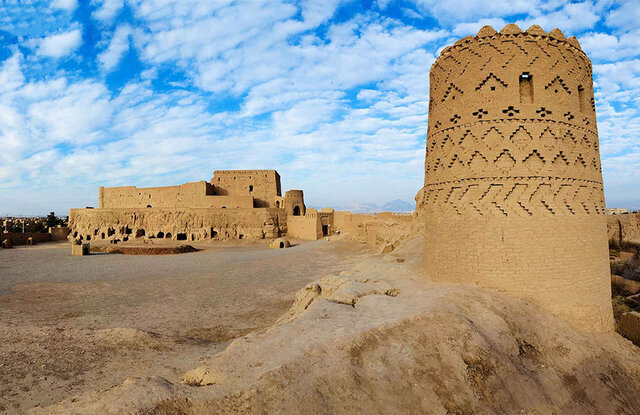Narin fortress in Isfahan to become a site museum

TEHRAN – The tourism chief of Isfahan province has announced plans to transform Qale Narin, an ancient mud-brick fortress in Nain county, into a site museum, aiming to highlight the region’s rich history and attract more tourism.
Amir Karamzadeh shared the news during a recent visit to Nain, where he reviewed ongoing restoration projects and historical sites in the area, CHTN reported on Sunday.
“This initiative aligns with our efforts to make Nain a major tourist destination in Isfahan, given its wealth of historical sites and cultural attractions,” Karamzadeh said.
The fortress, often regarded as one of the most significant historical structures in Nain, is undergoing a new phase of restoration launched earlier this year. The impressive mud-brick citadel, believed to date back to the Parthian era, is a testament to the area's architectural and historical importance.
Experts say, Qale Narin’s transformation into a site museum is expected to provide visitors with a deeper understanding of the region’s heritage, showcasing artifacts and stories tied to its long history. Mahmoud Madanian, head of Nain’s local office for heritage and tourism, has emphasized the significance of the project in preserving the fortress for future generations while enhancing the cultural experience for tourists.
As a site museum, Qale Narin will not only serve as a monument to the past but also contribute to the local economy by attracting domestic and international visitors to Nain and its surroundings.
Qale Narin, which spans approximately 2,500 square meters, was originally used as a citadel and administrative-military center before the Islamic era. The site is listed as a national heritage site under registration number 4177.
Since antiquity, mankind has assumed the need to fortify properties to survive in an ever-changing world of invasion and conquest. Commencing from simple earthworks and wooden walls, fortifications gradually evolved into complex, unconquerable, imposing citadels.
Those strongholds were normally erected and maintained along significant routes and cities, particularly at heights overlooking steep slopes or cliffs. Many of the fortifications of the ancient world were built using mud brick, often leaving them no more than mounds of dirt for today’s archaeologists.
AM
Leave a Comment